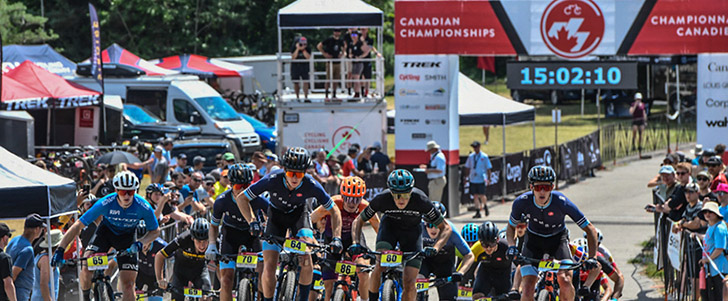November 13/13 18:32 pm - UCI Releases Rule Changes for 2014 MTB Season - UPDATED
Posted by Editoress on 11/13/13
The UCI regularly updates the regulations for all disciplines of the sport, and most are small administrative changes or updates to reflect advances in equipment, or reflect the increasing skill and speed of athletes. However, for the 2013 season the UCI introduced some significant changes to to mountain biking at the World Cup level that caught riders and teams by surprise.
Now, the UCI has made revisions for 2014 that address a number of these concerns, and have also moved into the new and growing discipline of Enduro. We have identified the changes and the reasoning (so far as we can tell) behind them. The full rules with identified changes (67 pages) can be downloaded Here.
Cross-country
For the standard cross-country (called Olympic Cross-country or XCO by the UCI) the biggest change is the start order (call up) at the World Cup. Prior to 2013, call up was always based on current World Cup standings after the previous round (or UCI world rankings for the first round). For 2013, the UCI switched to world rankings, which caught a lot of teams and riders off guard.
It meant that some fairly big names who had not raced early season races before the World Cup (thus building their UCI ranking) were pushed back in the start order, which can be critical in the shorter, faster races of recent years. (Of course, it assisted riders like Julie Bresset (France), who missed the early part of the World Cup season due to injury). It was highly unpopular, to say the least, and confusing to spectators, since the leader of the World Cup often didn't have the Number 1 plate.
For 2014, the UCI has reverted to a version of the previous system: The top-16 men and women in the current World Cup ranking (ie, after the previous event) are called to the line in that order - this is the first two rows. After the first 16 riders they will be called up by UCI ranking. For the first World Cup of the year the UCI ranking will be used for all spots.
This will be used for the Elite and Under-23 World Cups because the Junior category has been dropped. There will be a series of junior events at World Cups, but they will not be a series.
In other changes or clarifications:
• The Eliminator in the World Cup (XCE) will offer UCI ranking points 16 deep, with 50 points for first in each round
• The length (distance and time) of races for the different categories is also specifically detailed
• Course design specifies that it must be a cloverleaf for spectator and TV viewing
• Entry criteria for the XCO World Cup are specifically laid out - 20 UCI points or national team (maximum 6 riders) for Elite, national team or member of UCI team for U23 categories
• Marathon distances are increased to a maximum of 160 kilometres for both men and women, with a minimum of 60 kilometres
• Point-to-point races have no minimum or maximum specified, but they must start and finish in different locations
• The Team Relay now gets Nation ranking points at Continental Championships as well as at World Championships
There aree no other changes to the Eliminator, other than the UCI points noted above.
Downhill
There has been the addition of mass start events in the Downhill discipline - called DHM, as opposed to DHI for individual events, but this is still primarily an individual timed discipline. The major change is very similar to that of XCO - the World Cup standings will be used for ranking and starts, as opposed to UCI rankings.
For the Downhill there is an added incentive because the top riders are 'protected', meaning that if they have a mechanical or crash during the seeding run, they can still start the Final. The top 10 women and top 20 men are protected in this fashion, based on the latest World Cup standings. For the first event, the standings at the end of the previous season will be used.
4-Cross
This event was dropped from the World Cup and is now only a World Championship event (plus a few regional series). There are no changes of note to the regulations.
Enduro
This is a brand new discipline for the UCI, and seems to be mainly a reaction to the highly successful Enduro World Series. More and more World Cup and former World Cup riders are participating in these events. While the UCI set out rules, they are pretty much following the lead of the EWS. It should also be noted that there is nothing in the rules about participation in unsanctioned Enduro events by licenced riders; that is a whole different controversy that also includes Road and Cross-country...
For those unfamiliar with Enduro, it consists of individual start timed stages that are primarily descending but not full on DH courses. The stages are linked by non-timed sections (liaison stages, although the UCI misspelled it as liason...) that can include uphill pedaling sections or the use of chairlifts/gondolas.
Riders must use the same bike (frame, suspension and wheels) throughout, although broken parts can be replaced with permission and a time penalty. There must be a minimum of three timed stages, with at least two different courses.
| Return to Canadian Cyclist homepage | Back to Top |





